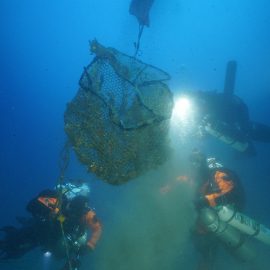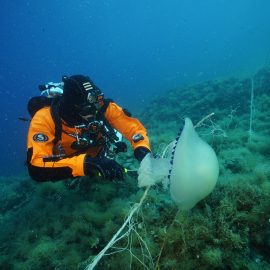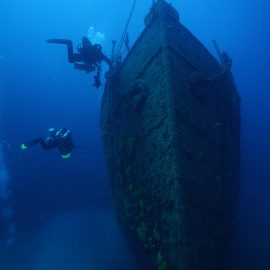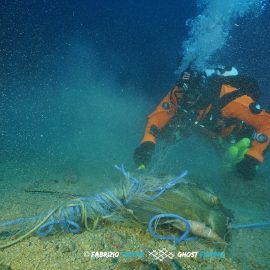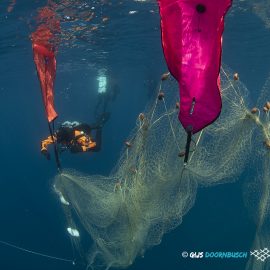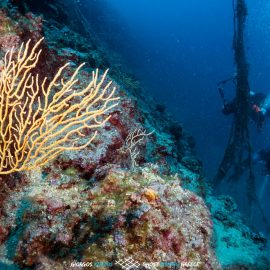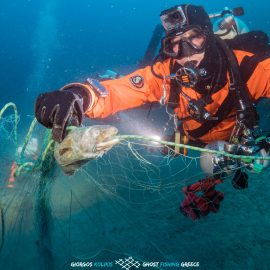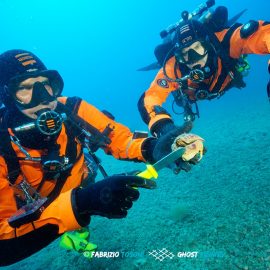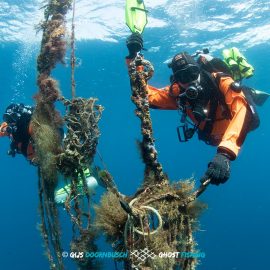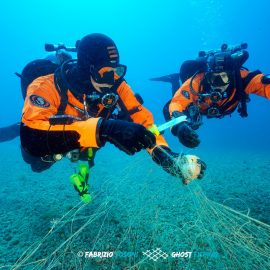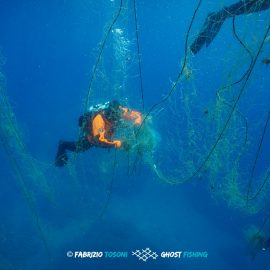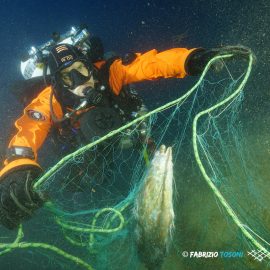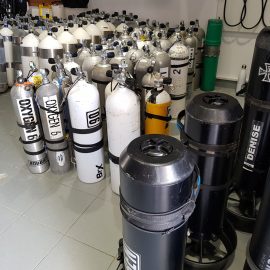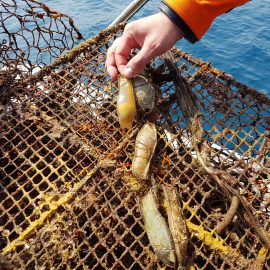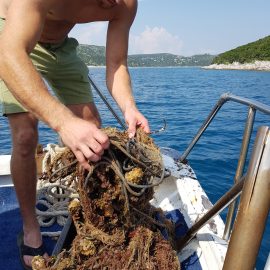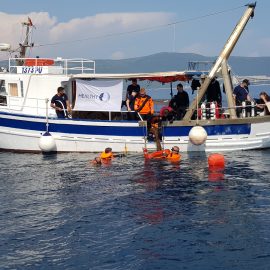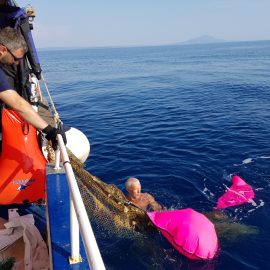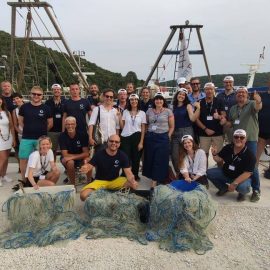Healthy Seas’ latest main diving event for the recovery of ghost fishing nets took place from August 25th to September 2nd. It was our first trip back to Croatia since 2014 and we were eager to find out if the work we performed on the Argo shipwreck 5 years ago had a lasting effect.
Besides the Argo, the Bay of Kvarner hides other wrecks beneath its surface. Like the MTB-655, SS Lina and SS Vis. Technical divers love shipwrecks, so we were not surprised that 12 volunteers from 3 Ghost Fishing chapters signed up for this project. They came from the Netherlands, Poland, Germany, Italy, Greece and Croatia of course, to do what they are trained to: remove ghost fishing gear and save marine life. Several reefs, safe havens of exceptional marine biodiversity, were also ghost net removal targets.
Dozens of gas tanks were prepared the first day at the Krnica Dive Center, the support center of our operations. The weather was on our side, but the murky visibility had its challenges. Nine days of hard physical labor brought very fruitful and at times, unexpected results.
The Argo Shipwreck remains clean. We saw no new nets on it and, on the contrary, beautiful corals have taken the place of the trawler nets divers removed back in 2014.
A lucky stingray will live to see another day thanks to Pascal van Erp and the rest of the diving team who came very close to the venomous creature in order to rescue it. A barrel jellyfish was also found in time and rescued.
Rounding off the list of unusual findings are the many Catshark egg cases which were attached to the thicker ropes of fishing lines and crab cages.
We were very happy to welcome our partners Racemark, Object Carpet and Aquafil at our mission headquarters in Kvarner Bay. They also followed us on a boat to experience a Healthy Seas mission firsthand and helped us free several animals that were found entangled in ghost nets. We think they will be back!
All in all, about 1000 meters of gillnets were removed during 12 dives, as were several meters of trawler nets, 100 meters of long lines and 15 crab cages, most of which were returned to the fishermen that had lost them.
What happens now? The nets are going to be transported to our partner Nofir A.S. for sorting and then the nylon parts will be used, together with other nylon waste, by Aquafil to produce ECONYL® yarn.
Although the team worked intensely, there is still a lot of work left to do so the local divers will return to continue cleaning up this important marine habitat.
- Barrel jellyfish are venomous through their tentacles and very complicated to release because of a gelatinous “body” structure which tears apart easily.
- SS Lina
- The stingray is venomous and complicated to release due the risk of being stabbed by its tail. The animal was in heavy stress and already had some serious traumas due to its fight against the gill net.
- Catshark egg cases were attached to the thicker ropes of fishing lines and crab cages.
- Happy team poses with 500 meters or recovered gillnets.




